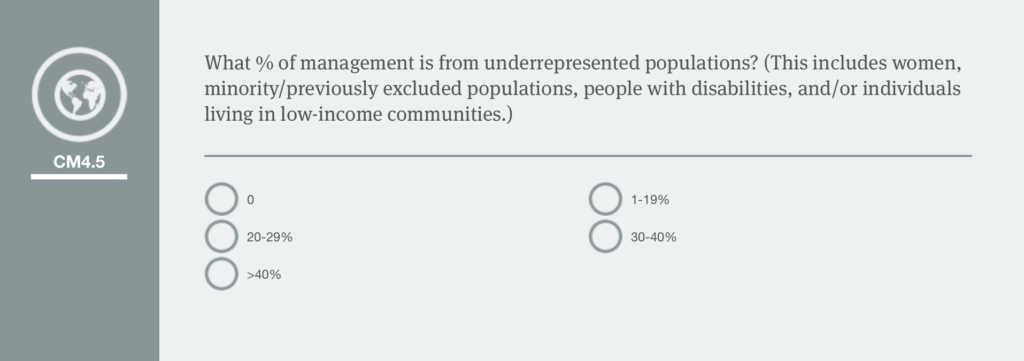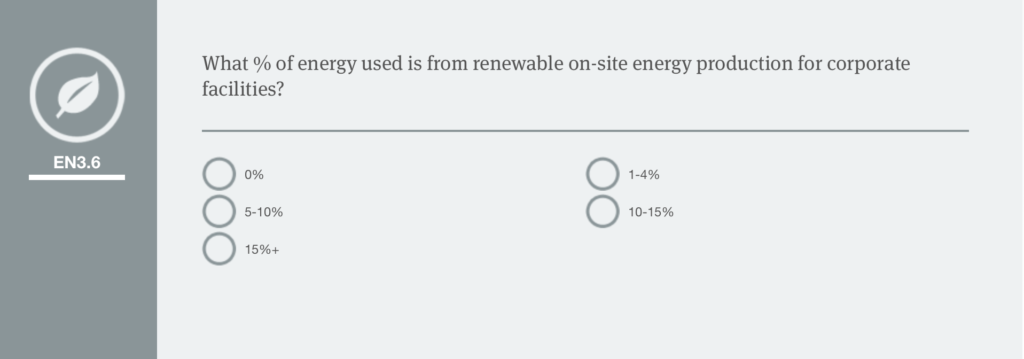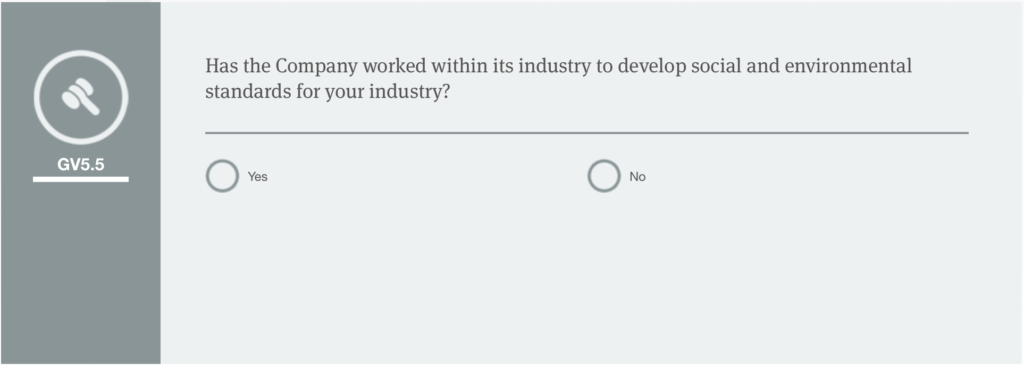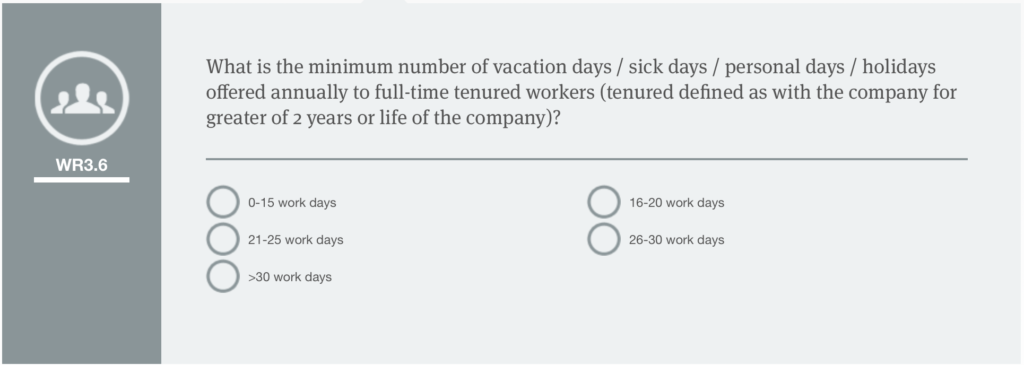The B Corporation movement is having a major moment thanks to the pandemic. During the past year, rising anti-racism awareness has triggered consumers to look closely at what their favorite brands support. In an age where socially conscious consumers are hungry for change, companies that are certified B Corporations are seeing incredible success. If you’re considering getting your B Corporation certification, take a look at everything we’ve learned along the way. This step-by-step guide will help you clarify the certification process and obstacles you can easily avoid.
What a B Corporation is (And Why You Should “B” One)
B Corporations are certified by B Lab, a non-profit organization headquartered in Pennsylvania, as displaying an exemplary commitment to protecting the environment, working with transparency and integrity, elevating minorities, and keeping their workers well.
To become a certified B Corporation, companies must take the B Corporation Impact Assessment (BIA) and score an 80 out of 200 points. (More on preparing for the BIA below.)
The Pros (and Pros) of Earning the B Corp Seal
Accountability bolsters your reputation — and revenue
Forty six percent of consumers choose brands that are socially responsible, according to a 2019 survey conducted by Markstein and Certus Insights. Researchers also found nearly 70% of respondents were skeptical about businesses that discuss corporate responsibility.
The beauty of having the B Corp seal? It speaks to your company’s commitment to making a positive impact so you don’t have to routinely advertise the good you do. Today’s consumers turn to businesses that are authentic at their core; your B Corp seal makes a stronger, more attractive statement about your values than posting positive sentiments about your company on social media alone.
B Corps attract fresh, forward thinking talent
The 2018 BSR/GlobeScan State of Sustainable Business survey illuminated something important about the millennials and Generation Z-ers in the work force: the image of your company matters.
Inc. finds that by 2025, 75% of the workforce will be comprised of millennials. In around three years, Gen Z will occupy 75% of the workforce, according to Forbes. We know that workers from younger generations are willing to trade a high salary for a position with purpose. They apply to companies that clearly position their brands and take measurable action to improve the world.
The easiest way to grab the attention of millennial and Gen Z applicants? Get your B Corporation certification.
Good governance is good for staff retention
Running a socially conscious, value-driven company lowers employee attrition rates. Benevity, Inc. polled two million users connected to Fortune 1000 companies and found that turnover dropped by nearly 57% in the employee group that supported their companies’ missions and giving behaviors.
The statistics speak for themselves: People want to work for companies that combine profitability with generosity.

Benefit Corporations vs. Certified B Corporations vs. ‘Caring’
It’s easy to mix up Benefit Corporations and B Corporations. There’s also some overlap between the two. Like B Corporations, Benefit Corporations consider their impact on all stakeholders and take public accountability for their work. But each entity has unique certification requirements, performance measurements, costs, and roles.
A Benefit Corporation is a legal structure that helps B Corporations do business to make an impact. Your company can be both a B Corporation and a Benefit Corporation. Many organizations start out as Benefit Corporations and go on to earn the B Corp seal (Patagonia is one of them).
The most noteworthy difference between the two: Only B Corporations are certified by a non-profit organization (B Lab). The perks of associating your business with a non-profit are numerous:
- Announcing that your business cares about social issues that matter
- Affirming that you turn a profit through equitable, ethical processes
- Demonstrating that your business is building a bridge to a better world
Pledging to try harder and “care” or be a good corporate citizen harks back to widespread skepticism toward the business world. Like the old saying goes and the statistics show … talk is cheap.
Becoming a Certified B Corporation: What to Expect
1. Take the B Impact Assessment
The first step to becoming a certified B Corporation is the B Corporation Impact Assessment. This is a free, confidential exam that determines your company’s B Corp eligibility. The core requirement: being established for 12+ months. (If your business is new, you may be eligible for Pending B Corp Status.)
The BIA examines your company’s reach, values and beliefs, equity, and impact on your community and the world. The four core categories are Governance, Workers, Community, and Environment.
Here are a few sample questions from each category on the official B Corporation website (for more samples, visit this page):




The Disclosure Questionnaire evaluates the negative impact of your business, not limited to unresolved complaints, fines, and environmentally harmful activities.
There’s no such thing as a perfect B Corporation. Listing a few small fumbles on your Disclosure Questionnaire won’t prevent you from getting certified. But major incidents are likely to prompt further investigation from B Lab, and these must be posted on your BCorporation.net profile.
2. Meet All Legal Requirements
There are basic legal requirements that all B Corporations must follow. These include evaluating how your actions affect all stakeholders, as well as switching to a benefit corporation structure within two years of certification.
Visit the official website to determine your legal requirements according to your location and company structure.
3. Schedule Your BIA Review and Submit Supporting Documentation
After you complete the BIA and confirm your company is dedicated to meeting the core legal requirements, it’s time for the final step: scheduling your assessment with a B Lab Standards Analyst.
First, submit your BIA and Disclosure Questionnaire for review (hopefully, you receive the score you aimed for!).
Next, wait for your B Lab Standards Analyst to contact you about scheduling a time to review your BIA. Expect to supply documentation to prove six to 15 items on your BIA. The official website states the wait time for a BIA review is 1-6 months so don’t wait to get started.
4. Complete Your BIA Assessment Review and Background Check
Get ready for one of the most important parts of your review: a 60-90 minute phone meeting with a B Lab Analyst. Your phone meeting will raise or lower your final score; think carefully about your responses.
The majority of companies seeking a B Corporation certification are asked to undergo a background check. (Negative incidents are evaluated in the same manner as black marks on your Disclosure Questionnaire.)
5. Routine Maintenance: Recertification and Site Reviews
B Corporations are required to seek recertification every three years.
B Lab also selects 10% of B Corporations worldwide at random for Site Reviews. The procedure can be conducted in-person or virtually, and the minimum score to pass is 80 out of 200 points. Blind audits ensure that all B Corporations remain up to standard.

4 Common Pitfalls for Aspiring B Corporations
1. Neglecting your subsidiary companies
If your business owns subsidiary companies, they need the B Corporation seal of approval, too. In this case, you have two options: certify together or individually.
First, you can certify the parent company and subsidiaries together as one profile listing on Bcorporation.net. This method works best if the subsidiary companies have strong ties to the activities and operations of the parent company. The core requirements for parent companies to pass the B Corporation certification test are the same for subsidiaries. Each subsidiary company requires an additional fee of several hundred to several thousand dollars.
Alternatively, you can certify independent subsidiaries separately from your parent company. The process is the same as certifying parent companies and subsidiaries together. However, each subsidiary has their own profile listing on Bcorporation.net.
2. Hiding your company’s history
The B Corporation certification process leaves no nook or cranny in your company unturned. Be open and transparent about every aspect of your business dealings — don’t hide anything when you submit your supporting documentation. Review controversial issues that impact the B Corporation certification process before you collect your documentation.
3. Not having enough information to apply
More than 3,500 B Corporations are small businesses. But there’s a tough catch-22 for the certification process: being so small that you lack sufficient information for the BIA.
In this podcast, Gage Mitchell, founder and CEO of Modern Species, talks about B Lab and the B Corporation Impact Assessment. He also dives into the small business struggle of finding the best time to apply (spoiler: there isn’t one, but he has some solid advice).
A key takeaway: Becoming a B Corporation as a small business is easier if you start planning in advance. Don’t wait to thoroughly document your business dealings. If you do, you may need to follow Mitchell’s tip to hire a contractor to help you with the BIA.
4. Leaving your team out of the process
You want to make your business more transparent, more accountable, and your team members agree. But that isn’t always the case.
If you don’t educate your team about why becoming a B Corporation is important, your certification will have a weaker impact. Before you act, discuss the reasons and best results of attaining the B Corp seal with your team — more than once.
Emphasizing that the B Corporation certification rests on transparency will also encourage your team to open up about what they feel needs improvement. You might be surprised by small issues that come to light that you never knew existed.
Prosper for Purpose: It Was Meant to “B”
Prosper for Purpose became a certified B Corporation in 2016. We’re one of only 21 B Corporations in Ohio (along with one of our favorite treats, Jeni’s Splendid Ice Creams!). As a branding and PR agency that believes in harnessing business as a force for good, the B Corporation certification underscores our mission.
Receiving the B Corp seal didn’t infuse our brand with altruism or self-awareness. It reinforced the preexisting values that make us passionate about our work. It continues to inspire us to take a closer look at the ripple effects of our business. The annual recertification process allows us to build on proven processes and nip small issues in the bud.
No matter where you are in your entrepreneurship journey, stop and think about the legacy you wish to leave behind. Earning a B Corporation certification is no small feat; it builds character for your company, and it inspires organizations in your sphere to follow suit.
With every new B Corporation, we inch the needle closer to lasting, revolutionary change. We move closer to a business world where equity, honesty, and giving back are the foundation of every organization.
Doing Business by the B Corporation Model
Capitalism can be compassionate — B Corporations speak to that truth. Even if you aren’t ready to apply for the B Corporation certification, you can make tweaks to your business plan that draw upon the B Corp model.
Weave your brand values into your work. Undertake every project with your purpose in mind. Think about how your decisions and investments affect all levels of your organization and community. B Corporations encourage us to raise the bar in our organizations and never accept “good enough.”
Tell us your thoughts about the B Corporation movement and your company’s certification journey via email. Your story could be featured in our social learning group and our Twitter, LinkedIn, Instagram, and Facebook pages!

LEAVE A COMMENT
Comments